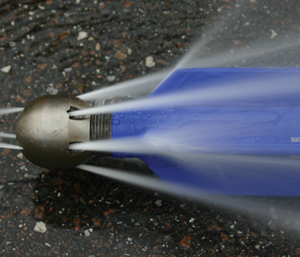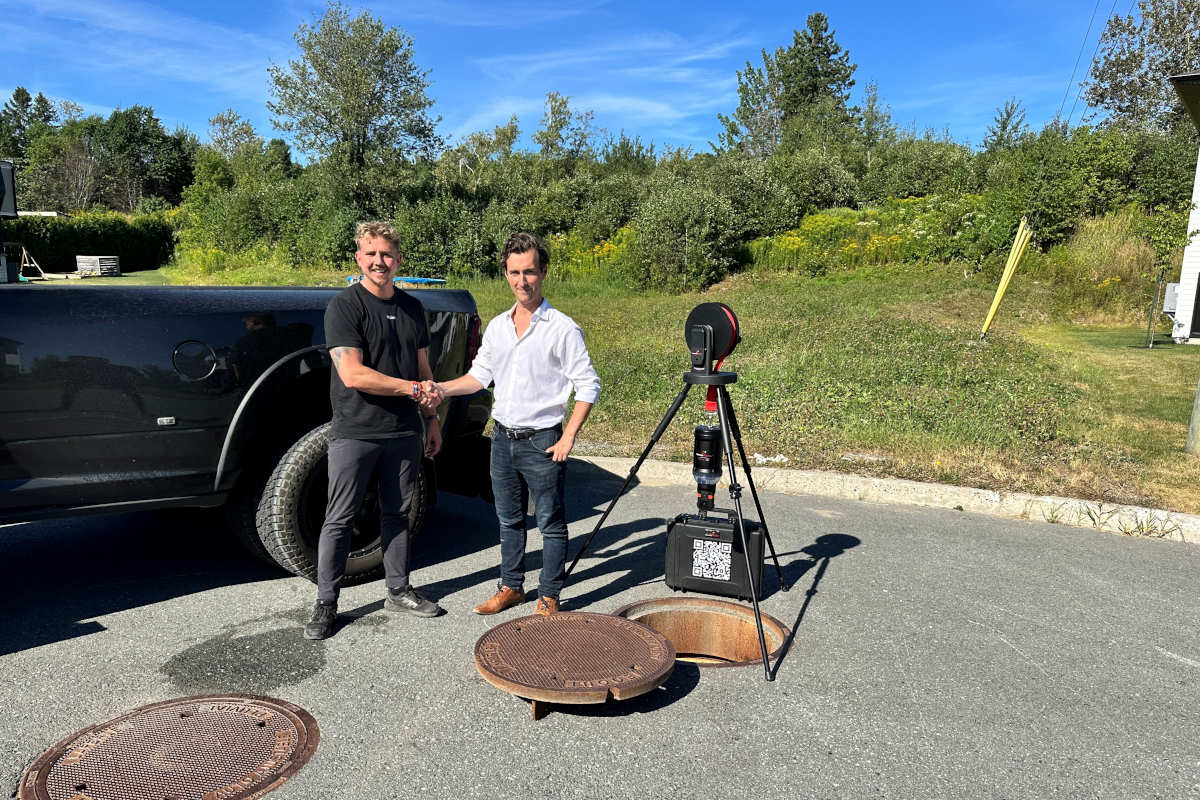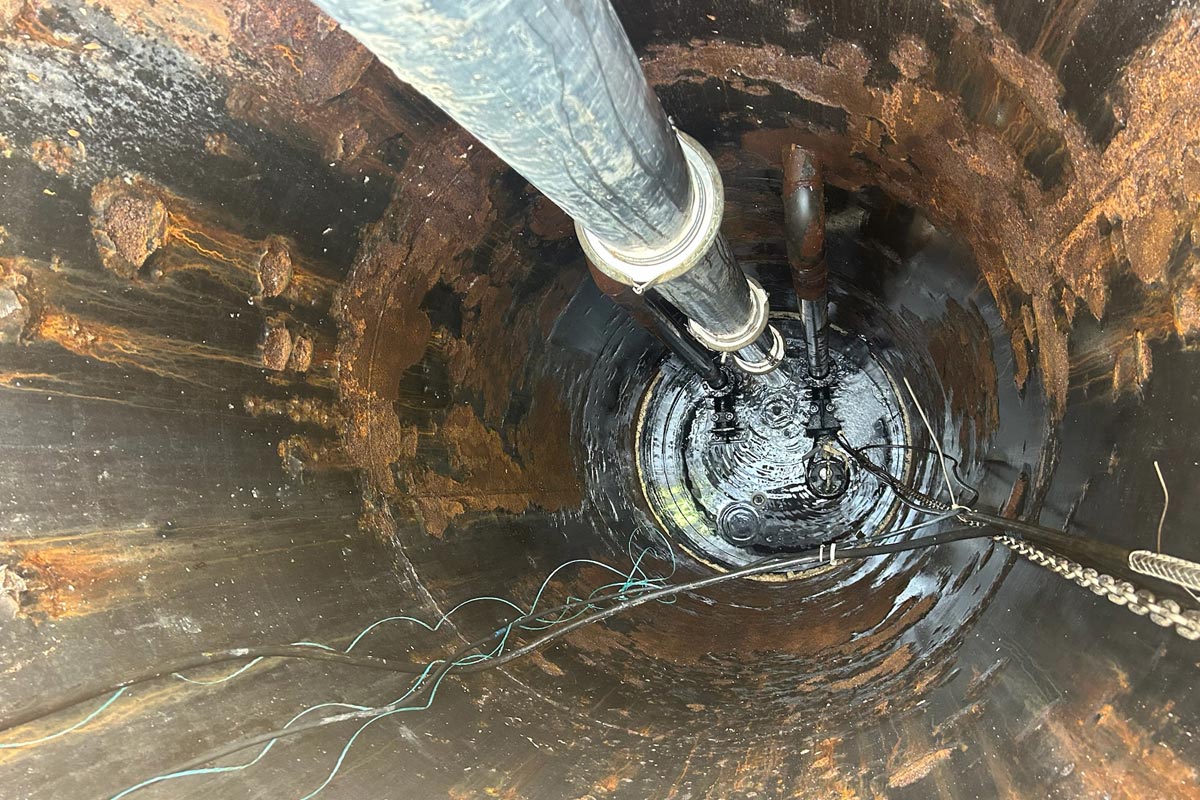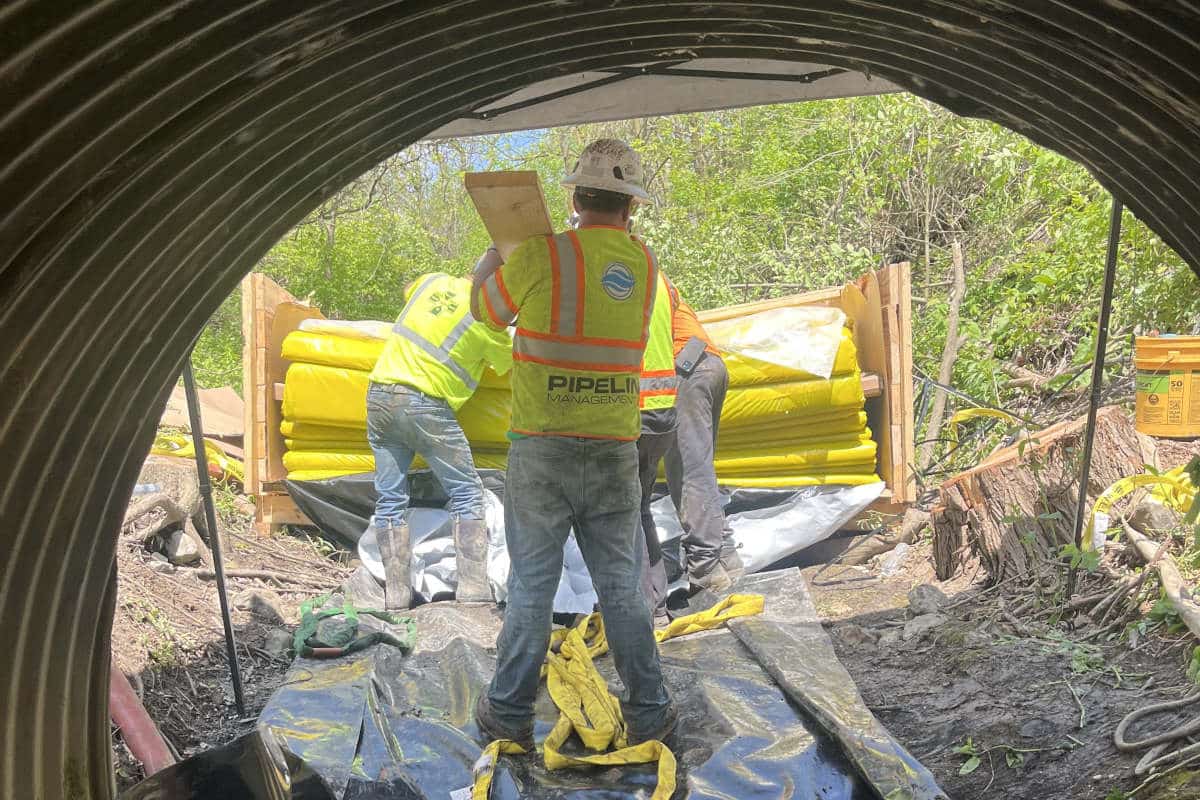
How To Choose the Correct Nozzle for the Job
 Sewer nozzles got started in the 1950s with very basic designs — in fact, little attention was paid to design since many nozzles were just rounded pieces of steel with drilled holes.
Sewer nozzles got started in the 1950s with very basic designs — in fact, little attention was paid to design since many nozzles were just rounded pieces of steel with drilled holes.
Cost was more of a consideration than performance and little was known about the flow performance of high-pressure water in small spaces. Some early nozzles, for example, abruptly diverted water at angles of 140 to 160 degrees, creating turbulence and drastically lowering the sewer nozzle’s ability to create a concentrated, high-pressure stream of water.
Two European companies, AquaTeq of Sweden and AP Hydrotechnik of Germany, began to change all that when they produced many new nozzles in the 1980s and 1990s. In America, NozzTeq worked with these firms to introduce the new sewer cleaning nozzles. The most important idea to emerge was that a water source’s smooth, ‘laminar’ flow should be preserved in order to create the most powerful possible ‘jet stream’ emerging from the nozzle. The research of Bo Larson and AquaTeq was especially important in developing techniques for creating the powerful jets of water that are very useful for sewer cleaning.
Selecting the Right Nozzles
Today, nozzle selection is recognized as the most important decision made when assembling a jetting system. Lots of systems can create high-pressure, but that pressure can be wasted if not directed effectively at the nozzle end — without the right nozzle, time, money, water and fuel are all being wasted. So it’s worth taking the time to learn about the range of sewer cleaning nozzles available and make a good selection for the conditions in your area. And it’s a good idea to educate your operators about the importance of nozzle selection.
Hundreds of nozzle types are now being used in the United States, including drilled nozzles, spinners, high-performance debris removers, bottom cleaners, high-pressure jetters, low-speed cutters, high-speed cutters, impact cutters and more. It’s tempting to acquire dozens of special use sewer nozzles, but a better approach is to acquire just a few versatile nozzles and learn to apply them properly.
Here are some ideas for assembling your department’s nozzle selection:
 A basic debris remover is important. When choosing, consider the nozzle’s number of jets, the size of the jets, the gallons per minute (gpm) delivered by the truck, the hose length being used and the pressure you want to operate at. Incidentally, you don’t necessarily want to operate at maximum pressures — in fact, as a general rule, end hose pressures of 850 to 950 psi are usually ideal. And you don’t have to determine the best nozzle by yourself; just have the above information handy when talking to your supplier so they can help you find the right nozzle. If your supplier doesn’t understand the need for this information, you should probably find a more knowledgeable supplier.
A basic debris remover is important. When choosing, consider the nozzle’s number of jets, the size of the jets, the gallons per minute (gpm) delivered by the truck, the hose length being used and the pressure you want to operate at. Incidentally, you don’t necessarily want to operate at maximum pressures — in fact, as a general rule, end hose pressures of 850 to 950 psi are usually ideal. And you don’t have to determine the best nozzle by yourself; just have the above information handy when talking to your supplier so they can help you find the right nozzle. If your supplier doesn’t understand the need for this information, you should probably find a more knowledgeable supplier.
Nozzles for cleaning 3- to 6-in. sewer lines should be kept simple — a drilled or replaceable-orifice debris-removing nozzle is all that’s needed. When doing video inspection, you will need a nozzle without front jets, though you might want to run your penetrating nozzle through first.
For bigger pipes, you will need the right truck to go along with your nozzle to ensure that you have enough gpm to do the job. With more gpm, you can use bigger jets and move down the pipe faster. For 8- to 15-in. sewer lines, rounded nozzles with four to eight jets are usually sufficient. But keep in mind that the flow of water inside the nozzle is extremely important.
Pipes that are larger than 15 in. require a nozzle known as a bottom cleaner. Bottom cleaners tend to look alike but beware: they’re not all the same. Many are just hollow chambers that fill before jets activate. This creates turbulence and destroys smooth flow, so cleaning jets will not be concentrated, coherent and powerful. Bottom cleaners that deliver smoothly flowing water directly to orifices are much more effective.
When outfitting trucks, keep things simple for operators. It’s far better to have just a few sewer cleaning nozzles that everyone understands, rather than many special use nozzles that get misused. In addition to the nozzles described above, you may also want a good spinning nozzle for grease removal and possibly a nozzle with 15- and 30-degree jets. For removing debris in bigger lines, you want a nozzle and sled combination with six to eight jets, and a dependable bottom cleaner with as few jets as possible.
Remember these basics: Know your needs and available equipment, do research and let your supplier help. You should also check warranties and support and whether nozzles can be repaired. There are hundreds of available nozzles and many companies in this field, so you should be able to find exactly what you need — and it should be backed up by a good company.
Remember, a jetting unit is a great asset, but the system really begins where the hose ends.
Scott Paquet is CEO and president of NozzTec Inc., based in Dunedin, Fla.
![]()




